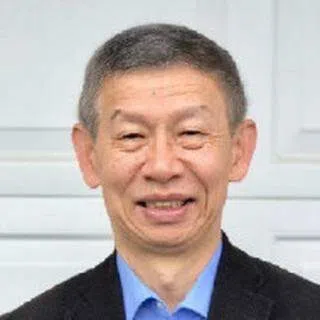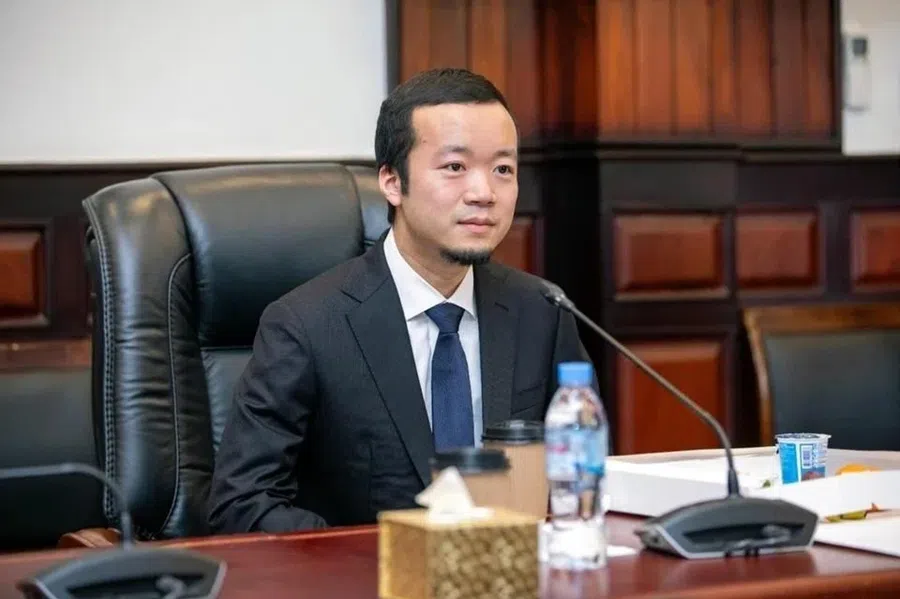Yiwu: How a barter town became the heartbeat of global small trade
From a place for rural barter trade in the 1970s to the world’s largest hub for small commodities, Yiwu’s growth defies conventional models. Rooted in pragmatism, powered by enthusiastic traders and shaped by global flows, it offers a masterclass in economic adaptability. Researchers Zhang Shuyue and Chen Xiangming tell us more.

Few people would be able to locate the city of Yiwu on a map. Yet this relatively less known and small city ranks first among China’s 408 county-level cities in per capita income in 2025 while topping them all in hosting the largest number of small private businesses.
Almost as significant as Shenzhen or Shanghai, Yiwu stands out in market reform, economic competitiveness, government effectiveness, trade capacity and global connectivity. This article explores the evolution of the “Yiwu model” across three stages — market formation, expansion and maturation — each shaped by reactive, active and proactive government interventions.
Seeding a local market, pre-1980-2002
Yiwu’s trajectory began with small-scale entrepreneurship in the late 1970s, after Mao Zedong’s death. This tradition, rooted in a barter system of grassroots, minimal-value exchanges famously known as “chicken feather for sugar” (鸡毛换糖), provided a practical way to supplement low rural household income during agricultural off-seasons, on the eve of China’s market liberalisation.
Yiwu’s then-party secretary, Xie Gaohua, recognised and responded to the interests and aspirations of the people, actively protecting this emerging market culture. He recalled: “At the time, reform was extremely difficult. What was right was treated as wrong, and what was wrong was seen as right. So I decided to start from reality and focus on what truly mattered to the people.”
Lacking advantages in manufacturing and technology, Yiwu focused on small commodities as a practical path forward.
On 5 September 1982, Yiwu opened its first small commodities market in Choucheng Town. Known as the “roadside market”, vendors lined the streets with household goods and farm products. By year’s end, more than 1,000 stalls were in operation. From this momentum, the outdoor market moved to Xinmalu (New Road) in 1984.
The “Develop Commerce to Build the County” (兴商建市 Xingshangjianshi) strategy set the stage for 1990, when Yiwu’s third-generation market grew into China’s largest small commodities hub. That year, officials finalised plans for the fourth-generation Huangyuan Market, signalling a transition to selling and buying in a large-scale, centralised indoor market. In 2002, the China Yiwu International Commodities Fair became the biggest fair of general merchandise in the country.

China’s entry into the WTO in 2001 gave a major boost to Yiwu’s growing exports of labour-intensive goods to the US and other markets. This milestone completed Yiwu’s first development phase, characterised by market efficiency that enabled traders to quickly adapt to global market changes.
Lacking advantages in manufacturing and technology, Yiwu focused on small commodities as a practical path forward. Its merchants adjusted product lines, pricing and production details in real time, to gain advantages in the labour-intensive manufacturing and international trade. From 2000 to 2002, Yiwu’s GDP rose from 11.9 to 14.8 billion RMB (~US$2.1 billion), an average annual growth of 11.5%.
Low barriers to entry, simplified paperwork and tax incentives helped turn scattered stalls into a dense commercial hub of over 75,000 booths...
Supporting a global market, 2002-2017
During this stage, the Yiwu government played a more active role in shaping the city’s international small commodity market by building its Districts 1 through 5, from 2002 to 2011. This connected and massive complex anchors and dominates the city. It drew traders scattered around the city into an organised central commercial hub that balanced the state’s regulatory coordination with the market’s spontaneous activity.
The government’s role was to provide physical infrastructure and light regulation to allow small businesses to flourish. By the completion of all five districts in 2011, the entire market complex covered 4 million square metres with over 400,000 kinds of products exhibited.
Low barriers to entry, simplified paperwork and tax incentives helped turn scattered stalls into a dense commercial hub of over 75,000 booths. Each day, 210,000 sellers connect through supply chains to more than one million small businesses and 2.1 million small or mid-sized suppliers, offering an incredible variety of goods to around 230 national and regional markets worldwide.
By 2005, Yiwu’s international trade volume surpassed its domestic trade volume for the first time. From 2006 to 2016, Yiwu saw the addition of over 200,000 new market participants.
A coordinated and balanced approach
Meanwhile, the Yiwu government experimented with policy and institutional innovations while drawing lessons from market practices. Professor Zhu Yaxiong at Zhejiang Normal University reflected on a symbiotic state-market and centre-local relationship, “Yiwu has consistently aligned itself with national directives, demonstrating strong political responsiveness. When the central government calls for reform pilots, Yiwu actively proposes initiatives, positioning itself as a local actor capable of serving national interests.”
This hybrid business model also balanced centralised coordination with decentralised competition, enabling the market to achieve an economy of scale without heavy-handed control.
To strengthen market efficiency during this stage, Zhejiang (China) Small Commodity City Group Co. operated the Yiwu market solely. Its functions extended from booth leasing and market oversight to broader international trade services, creating an integrated and improved system of market management and development. The Group also streamlined communication within the market so traders could receive policy updates and notices through WeChat groups, while zonal leaders coordinated changes and addressed market issues in real time.
In 2014, Yiwu launched a freight train to Madrid, Spain, via Central Asia, covering over 13,000 kilometres, one of the longest freight lines in the world.

This coordinated approach scaled up the Yiwu market’s operation and deepened its integration into the global trade network, which stimulated the birth and rapid growth of a logistics industry.
In 2014, Yiwu launched a freight train to Madrid, Spain, via Central Asia, covering over 13,000 kilometres, one of the longest freight lines in the world. This was followed by Yiwu opening a freight train service to London in 2017. Earlier in 2016, Yiwu even ran a short-lived freight train to war-torn Afghanistan via Kazakhstan and Uzbekistan. This was not coincidental, given the presence of Afghan traders in Yiwu. As Yiwu evolved through the stage ending roughly around 2017, it also incorporated more e-commerce and live streaming into its expanding global trading network.
Sustaining a mature market, 2017-2025
Driven by the market and supported by the government, global trade has brought local prosperity to Yiwu’s population, which exploded from around 50,000 in its small urban core in 1980 to 1.2 million in a greatly expanded urban district in 2017.
Over the recent years, however, Yiwu has faced major headwinds in global trade, starting with the trade war against China waged by the first Trump administration in 2018, followed by the deadly disruption of the Covid-19 pandemic. In response, Yiwu has adopted proactive measures to stabilise its mature but less competitive position for global trade in a new geopolitical world order.
Ambitious expansion and upgrading
First, the Yiwu government has unveiled the ambitious Yiwu Territorial Spatial Master Plan 2021–2035. The plan envisions expanding and upgrading trade and manufacturing spaces within the central city and two new sub-cities, creating a more integrated regional development. It also promotes tourism in the outer mountainous and forested areas to diversify the economy. Through the first seven months of 2025, foreign merchants/tourists numbered 353,000 person-times, 19.4% more than the same period of 2024.
... over 19,000 companies and businesses bid or applied to bid for the limited number of new booths in the new market hall [with 5000 booths], paying as much as over one million RMB...

Secondly, the Yiwu government has almost completed the city’s sixth-generation Global Digital Trade Center that comprises an AI and data analytics centre, a new market hall with over 5,000 booths averaging 30 square metres each, an office tower, and an apartment building.
This newly built space has become a big draw to merchants. In anticipation of District 6’s scheduled opening in October 2025, over 19,000 companies and businesses bid or applied to bid for the limited number of new booths in the new market hall, paying as much as over one million RMB, as we learned during our field work in July 2025.
To facilitate e-commerce further, the Yiwu government has introduced such digital trade platforms as Chinagoods.com. Through the first seven months of 2025, Yiwu’s e-commerce trade reached US$999 million RMB, up 218% year-on-year.

Thirdly, in 2024, the Yiwu government got a larger and upgraded logistics hub approved by higher authorities. It also celebrated the tenth anniversary of the Yiwu-Madrid freight train service, which ran 6,700 trains that carried 670,000 containers over ten years. With 25 freight train routes to over 160 cities in more than 50 countries across Eurasia, Yiwu has sent and received 13,000 freight trains with 1.1 million containers for the past ten years or so.
In August 2025, for the first time, Yiwu sent a freight train to Zhoushan Port in the coastal city of Ningbo, where the 50 containers were transshipped to the Port of Aden in Yemen, in 19 days. Through inter-city coordination, this new rail-sea intermodal shipping route benefits about 1,000 Yemeni-owned trading businesses in Yiwu, part of the roughly 10,000 foreign-owned enterprises registered locally, with over 15,000 foreign merchants residing in Yiwu all year round.
Weathering the threat of US trade tariffs
While the Yiwu government has ramped up efforts to upgrade the city’s central trade market and expand its global logistics capacity, it is the market itself that continues to drive Yiwu’s sustainable growth — adapting to the increasingly sophisticated preferences and behaviours of younger traders and consumers.
Yiwu’s consumer goods market today is being redefined by younger consumers’ emotional and individualistic preferences, reinforced by Yiwu’s small merchandise culture that embodies entrepreneurial aspiration and global connectivity. — a young merchant selling hair decorations

A young merchant selling hair decorations told us: “Yiwu’s consumer goods market today is being redefined by younger consumers’ emotional and individualistic preferences, reinforced by Yiwu’s small merchandise culture that embodies entrepreneurial aspiration and global connectivity. Emotional consumption fosters aspirational demand, with buyers drawn to the narratives and meanings attached to products sold in Yiwu.”
Yiwu’s journey is miraculous. From a small rural county engaged in barter trade in the late 1970s, Yiwu rose into the world’s largest sourcing centre for small merchandise today.
Through the first half of 2025, Yiwu’s trade reached 406 billion RMB, up 25% year-on-year, weathering the threat of US trade tariffs to China. From primitive market activities to government-induced, globally-connected, and digitally-mediated market maturation, Yiwu has evolved by adapting to the shifting global, national, and local conditions to stay ahead. The “Yiwu model” is ultimately a lesson in nimbleness and flexibility: adapt quickly, upgrade boldly and connect broadly.
*Trinity College Economics undergraduate Hunter Trylch also contributed greatly to this essay.
Writers’ note: We thank Professor Fan Lizhu and D. Wang Shuqiao at Fudan University, Professor Zhu Yaxiong at Zhejiang Normal University, and Ms Xu and Ms Chen in Yiwu for helping us with field interviews from the end of June to early August, 2025. Hunter Trylch’s research in Yiwu was supported by The Thomas Urban China Endowment at Trinity College, Connecticut. Chen Xiangming’s research was supported in part by the Paul E. Raether Distinguished Professorship Fund at Trinity College.






